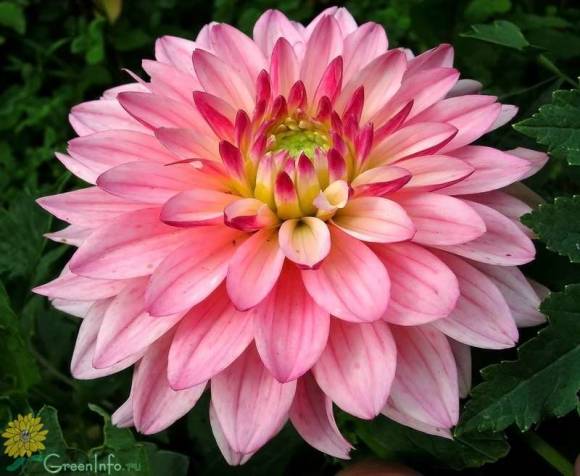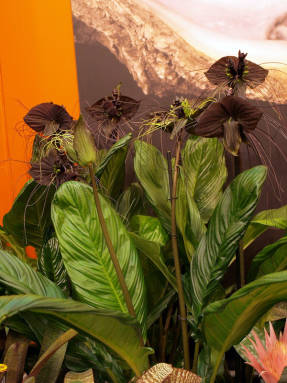 Even in the East, they noticed that there are no straight lines in nature. Straight lines and geometric shapes oppress our eyes. That is why winding paths and flowing outlines of the reservoir look better in the garden. Following the logic, a person should have long ago reconsidered his attitude to the layout of his own home. But the stereotype of perception interferes. We still prefer the dry and boring planes of rectangular facades and windows to a lively winding line. Still, a man was found, and not even an architect at all, but an artist who decided to build houses not in opposition, but in harmony with nature. He turned over our ideas about how a person's dwelling should look like, inscribed in the environment. This man's name is Friedensreich Hundertwasser. He is originally from Austria, where his most famous creations are located.
Even in the East, they noticed that there are no straight lines in nature. Straight lines and geometric shapes oppress our eyes. That is why winding paths and flowing outlines of the reservoir look better in the garden. Following the logic, a person should have long ago reconsidered his attitude to the layout of his own home. But the stereotype of perception interferes. We still prefer the dry and boring planes of rectangular facades and windows to a lively winding line. Still, a man was found, and not even an architect at all, but an artist who decided to build houses not in opposition, but in harmony with nature. He turned over our ideas about how a person's dwelling should look like, inscribed in the environment. This man's name is Friedensreich Hundertwasser. He is originally from Austria, where his most famous creations are located.
An implacable opponent of rationalism in architecture, Friedensreich Hundertwasser did not at all look like a revolutionary. He looked, as befits an artist, a strange, soft and trusting person, wore a wrinkled, ridiculous dress, multi-colored socks and some kind of extravagant medieval cap-cap. His whole appearance showed the world a rejection of pragmatism and rationality, on which the modern way of life is based. And all his work is a protest against the alienation of man from nature.
 The facades of the buildings, designed by the famous Austrian architect, are propped up by powerful trees, the trunks of which are skillfully crafted from a variety of brown tiles, creating the illusion of real bark. The roofs and protruding parts of the buildings have been transformed into gardens. Plants hang picturesquely from special niches and openings arranged right in the wall. Trees can even be used in a completely unusual role for them - as an architectural element. For example, in one roadside restaurant built by Hundertwasser, a birch tree adorns a glass turret-rotunda. Once this restaurant looked like a dull gray box, however, transformed by the hand of the Master, it has become a local landmark. Now motorists, especially those who see this miracle for the first time, slow down at the side of the road to get a better look at the game of intricate lines and colors. Thanks to the Hundertwasser, an ordinary industrial facility has become a world famous landmark - the thermal station in Spitelau, near the center of Vienna. According to the project of the Master, the Austrian resort village of Blumau was built, where people from all over the world flock to see the prototype of the architecture of the future.
The facades of the buildings, designed by the famous Austrian architect, are propped up by powerful trees, the trunks of which are skillfully crafted from a variety of brown tiles, creating the illusion of real bark. The roofs and protruding parts of the buildings have been transformed into gardens. Plants hang picturesquely from special niches and openings arranged right in the wall. Trees can even be used in a completely unusual role for them - as an architectural element. For example, in one roadside restaurant built by Hundertwasser, a birch tree adorns a glass turret-rotunda. Once this restaurant looked like a dull gray box, however, transformed by the hand of the Master, it has become a local landmark. Now motorists, especially those who see this miracle for the first time, slow down at the side of the road to get a better look at the game of intricate lines and colors. Thanks to the Hundertwasser, an ordinary industrial facility has become a world famous landmark - the thermal station in Spitelau, near the center of Vienna. According to the project of the Master, the Austrian resort village of Blumau was built, where people from all over the world flock to see the prototype of the architecture of the future.
Hundertwasser did not invent new architectural designs and technologies. He tried to keep all his projects simple and cheap to execute. And the most important tool for him was a shovel. The dwelling of the future is like a cave in which a person feels cozy and comfortable. Nature, as it were, takes a person to itself and gives him protection. Under a green roof, he is not threatened by any danger, everything is commensurate with his natural feelings and does not overwhelm with its size. Plants in such a dwelling and around it help a person to feel like a small part of the living world. Perhaps it is this consciousness that is capable of saving our civilization.









